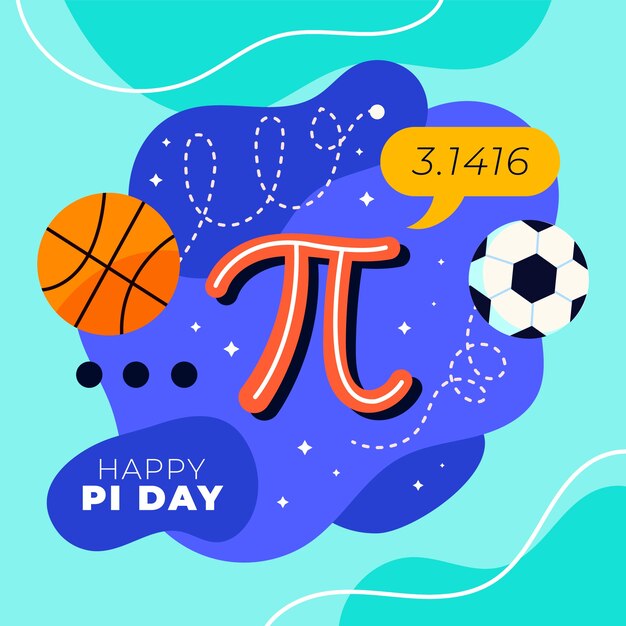10 Fun Facts About Pi

Pi is an irrational number, meaning it cannot be expressed as a fraction.
The symbol for pi (π) was first used by Welsh mathematician William Jones in 1706.
Pi has been calculated to over one trillion digits past its decimal point.
If you were to print out one billion decimal places of pi, it would stretch for almost 20 miles.
Pi is the ratio of a circle’s circumference to its diameter.
Pi is essential in many mathematical equations and formulas, including those related to geometry and trigonometry.
Humans have been studying pi for thousands of years; the ancient Egyptians and Babylonians had rough approximations of pi.
The value of pi is approximately 3.14159, but it extends infinitely without repetition.
In March, many math enthusiasts celebrate Pi Day on the 14th, representing the first three digits of pi.
Pi is pronounced pie (like the dessert) in English.
The Guinness World Record for remembering and reciting the most digits of pi is currently held by Rajveer Meena, who memorized and recited 70,000 digits.
Pi has been used in architecture throughout history to create structures with perfect proportions.
The ancient Greeks were mesmerized by pi and made significant contributions to its study.
The study of the number pi is a part of a mathematical field known as number theory.
Pi is an irrational constant, meaning it cannot be expressed as a finite decimal or fraction.
10 Fun Facts About Pi part 2
Pi is involved in the calculation of the area, volume, and surface area of various shapes, including circles and spheres.
The formula to calculate the circumference of a circle is C = 2πr, where r is the radius.
Pi has been calculated using various computational methods, including the Monte Carlo method and infinite series.
Isaac Newton and his rival mathematician Gottfried Leibniz used the calculation of pi to develop calculus.
Pi can be found in various areas of nature, including the arrangement of petals on a flower or the spiral of a seashell.
In 2019, Google employee Emma Haruka Iwao calculated pi to a new world record of 31.4 trillion digits using the company’s cloud computing infrastructure.
The search for the quadrature of the circle, a problem that tied into the exact value of pi, occupied mathematicians for centuries until it was proven impossible by Ferdinand von Lindemann in 1882.
Pi is a transcendental number, meaning it is not the root of any nonzero polynomial equation with integer coefficients.
The Bible mentions a geometric value similar to pi in 1 Kings 7:23, describing the basin in Solomon’s temple as having a circumference to diameter ratio of three.
Pi has its own dedicated day in Japan, where Pi Approximation Day is celebrated on July 22nd (22/7) due to the fraction 22/7 being an approximation for pi.
The famous mathematician Archimedes used a method known as the method of exhaustion to approximate pi.
NASA used pi to calculate the precise trajectory of spacecraft, including the Apollo missions to the moon.
The longest English word containing pi is pizzicato (referring to a playing technique in music).
Pi is used in computer graphics to calculate smooth curves and create realistic simulations.
The first 144 digits of pi add up to 666, a number sometimes associated with the devil.
Pi has its own song called Pi Song by Hard ‘n Phirm, which includes the decimal places of pi set to music.
The famous physicist Albert Einstein was born on Pi Day (March 14).
Pi has been used as a means of encoding secret messages, with digits representing letters in various substitution ciphers.
Pi has been calculated to billions of digits by supercomputers, helping researchers test the limits of computational power.
Pi is represented by the Greek letter π because it is the first letter of the Greek word for periphery.
The Pi World Ranking List ranks individuals based on their memorization and recitation of pi to thousands of decimal places.
Pi continues to fascinate and challenge mathematicians around the world, with ongoing efforts to calculate more and more digits accurately.
The earliest written approximations of pi can be traced back to ancient Egyptian math texts around 1900 BC.
Pi is used in various mathematical proofs, such as the proof of the Pythagorean theorem.
Pi is often used as an example of a transcendental number in mathematics education.
In Indiana, there is a town called Pi, which honors the mathematical constant as its namesake.
The calculation of pi has been a popular project for modern-day computer enthusiasts, attempting to break new records using personal computers.
In the movie Contact, the character Ellie Arroway’s father tells her to avoid making long-distance phone calls on a landline during a storm, using the analogy that the transmission is like calculating pi to the last digit.
Pi Day is recognized by the U.S. House of Representatives and the Senate as a holiday celebrating mathematics and science.
Pi has inspired artwork and expressions of creativity, with artists creating sculptures, paintings, and even pi-themed fashion.